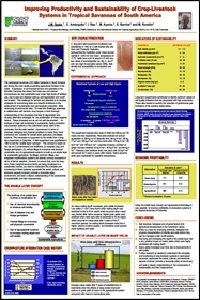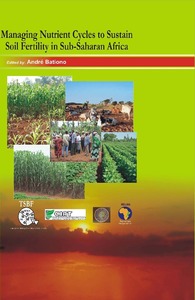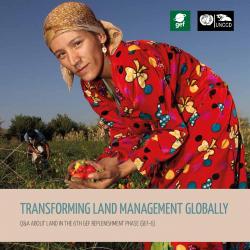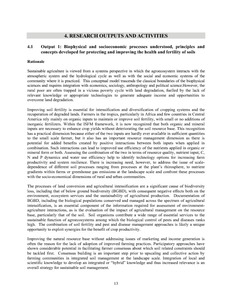Ordenación de tierras sostenible
AGROVOC URI:
Report of the external review panel of the CGIAR genebanks operations
Reconocimiento general del área Yorito-Sulaco, departamento de Yoro, Honduras, C.A.
Guidelines for integration of legumes into the farming systems of East African highlands
Expanding sustainable land management in Ethiopia: scenarios for improved agricultural water management in the Blue Nile
Deforestation due to farmland expansion, fragile soils, undulating terrain, and heavy seasonal rains makes the highlands of Ethiopia vulnerable to soil erosion. The diverse terrain of the rural highlands requires spatially explicit investments in land management structures. This paper utilizes recent hydrological and meteorological data collected from the Mizewa watershed in the Blue Nile Basin of Ethiopia, as well as household survey data on farmer preferences and investments, in order to better understand the physical impact of sustainable land management activities.
Transforming Land Management Globally
Responding to the immediate challenge of how we sustainably intensify the production of food, fuel and fiber to meet future demand without the further degradation of our finite land resource base, Land Degradation Neutrality (LDN), which emerged from the UN Conference on Sustainable Development (Rio+20) in 2012, is a potential target to address this challenge.
Construcción de una ¨capa arable¨ en suelos pobres: Conceptos esenciales aplicados a la altillanura
Building local institutional capacity to implement agricultural carbon projects: participatory action research with Vi Agroforestry in Kenya and ECOTRUST in Uganda
Background: Smallholders have begun to take advantage of a growing pool of investment in climate change mitigation. Meanwhile, early movers in this area are working to develop innovative models that will allow projects to be nancially sustainable and scalable while bene ting local actors. This study focuses on two of these projects in East Africa, managed by Vi Agroforestry in Kenya and ECOTRUST in Uganda. They engaged in a participatory action research process to identify ways that local actors could take on expanded roles within the projects.










